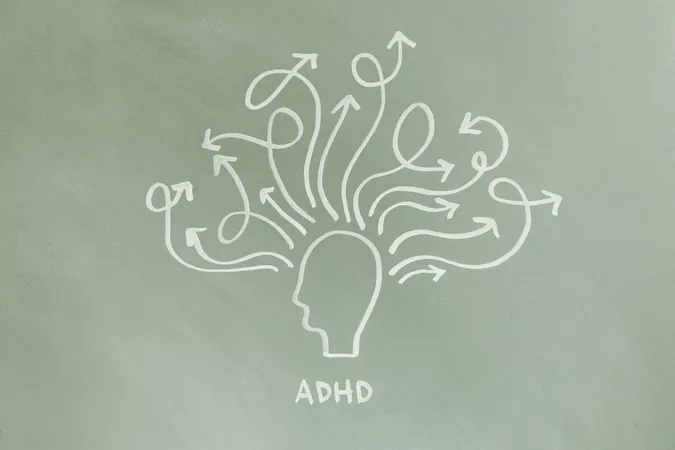
Groundbreaking Research Reveals How Environmental Factors May Influence Neurodevelopmental Disorders
2025-03-25
Author: Arjun
Introduction
In the ongoing debate of nature versus nurture, the conversation around neurodevelopmental disorders (NDCs) like autism and attention-deficit hyperactivity disorder (ADHD) has taken a significant turn. While it is well-established that genetics largely contribute to these lifelong conditions that manifest during childhood, new insights suggest that environmental factors might also play a critical role.
The Research
A recent study conducted by Ph.D. student Aleksandra Kanina at Karolinska Institutet sheds light on this intriguing issue. Her research focuses on the potential impact of various environmental factors, including adverse life events, psychosocial stress during pregnancy, and neonatal jaundice, on the likelihood of children developing autism and ADHD.
Key Findings
Kanina's findings are eye-opening. The study indicates a correlation between adverse life events and psychosocial adversity and an increased risk of autism and ADHD. However, these relationships appeared weaker when family background and genetic links were considered. This suggests that familial background could be a significant aspect influencing these associations, raising questions about the extent to which environmental effects directly contribute to these conditions.
Nuances of Neonatal Jaundice
Moreover, while neonatal jaundice was associated with autism diagnoses, Kanina pointed out that its relationship seemed to be affected more by perinatal factors, such as gestational age, rather than direct environmental impacts. This nuance underscores the complexity of linking environmental factors to neurodevelopmental disorders and emphasizes the need for further investigation in this area.
Implications for Families
The implications of this research extend beyond academic curiosity. Kanina is driven by a personal mission to contribute to a better understanding of ADHD and autism as stigmatized conditions. She highlighted how misconceptions about the origins of these disorders can lead parents, especially mothers, to unjustly blame themselves, perpetuating stigma. By clarifying the roles of both genetic and environmental factors, her work aims to alleviate such burdens on families.
Future Directions
Looking forward, Kanina advocates for future research that prioritizes familial influences and further explores the intersection of genetics and environmental exposures. As awareness and understanding of neurodevelopmental disorders continue to evolve, such investigations are crucial in debunking myths and promoting a more supportive environment for those affected by these conditions.
Conclusion
This groundbreaking research is not just about understanding autism and ADHD better; it’s about paving the way for more compassionate approaches towards those living with these disorders. As researchers like Kanina continue to unravel these complexities, we can hope for a more informed public conversation and ultimately, improved support systems for families navigating these challenges. Stay tuned for more revelations in this critical area of study!



 Brasil (PT)
Brasil (PT)
 Canada (EN)
Canada (EN)
 Chile (ES)
Chile (ES)
 Česko (CS)
Česko (CS)
 대한민국 (KO)
대한민국 (KO)
 España (ES)
España (ES)
 France (FR)
France (FR)
 Hong Kong (EN)
Hong Kong (EN)
 Italia (IT)
Italia (IT)
 日本 (JA)
日本 (JA)
 Magyarország (HU)
Magyarország (HU)
 Norge (NO)
Norge (NO)
 Polska (PL)
Polska (PL)
 Schweiz (DE)
Schweiz (DE)
 Singapore (EN)
Singapore (EN)
 Sverige (SV)
Sverige (SV)
 Suomi (FI)
Suomi (FI)
 Türkiye (TR)
Türkiye (TR)
 الإمارات العربية المتحدة (AR)
الإمارات العربية المتحدة (AR)